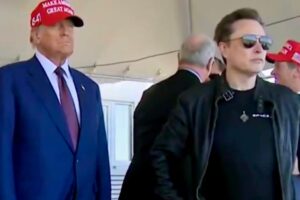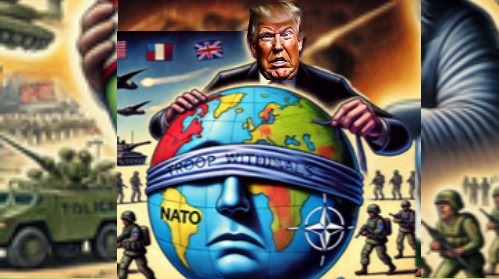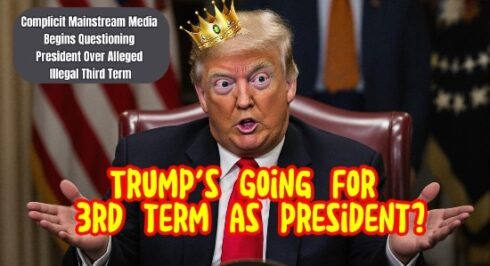When President Donald Trump announced his plan to withdraw 20,000 U.S. troops from Europe, it wasn’t just a military maneuver—it was the beginning of a strategic retreat that has the potential to blind America to emerging global threats. The reduction in U.S. military presence—set to decrease by a staggering 20%—raises alarming questions about the nation’s ability to respond to future threats. With around 80,000 troops remaining in Europe, many military experts fear that this reduction may signal a loss of American vigilance against Russia’s creeping ambitions in Eastern Europe and beyond.
In practical terms, this pullback could give adversaries like Russia more room to maneuver without fear of immediate U.S. retaliation. The absence of U.S. forces in critical areas of Europe might embolden Moscow to push further into neighboring territories. Without the muscular presence of U.S. troops, NATO’s ability to act swiftly in response to aggression could be hampered, turning a once-unimaginable threat into a disturbing reality.
NATO’s Collective Defense at Risk: Can Europe Shoulder the Burden?
The most immediate concern with Trump’s decision is the potential erosion of NATO’s collective defense structure. NATO, established on the foundation of mutual defense under Article 5, has relied heavily on the U.S. military as its bedrock. A reduction in American troops would strain this framework, forcing European nations to take up the slack. However, as Polish Prime Minister Donald Tusk has pointed out, Europe’s defense spending is far from where it needs to be to compensate for the loss of U.S. military support.
The blunt reality is that not all European nations are in a position to pick up the slack. While countries like the UK and France have stronger defense budgets, many Eastern European states, which are most vulnerable to Russian aggression, lack the financial resources and political will to increase their defense budgets sufficiently. This leaves NATO in a precarious position, potentially fracturing the alliance and weakening its ability to respond to regional threats.
Trump’s Financial Gambit: Who Foots the Bill for Europe’s Security?
Trump’s rationale for withdrawing troops goes beyond military strategy—he is also making a financial statement. His insistence that NATO allies, particularly European nations, contribute more toward maintaining the remaining U.S. forces is a direct challenge to the long-standing U.S. taxpayer burden. This push for increased financial contributions, while understandable in the context of America’s budgetary concerns, risks alienating European allies who may view it as another example of the U.S. shifting the responsibility for global defense onto their shoulders.
However, this strategy also highlights the fundamental flaw in Trump’s thinking. A military presence in Europe isn’t merely about sharing costs—it’s about global power projection. By reducing the U.S. footprint in Europe, Trump may inadvertently send the message that America is retreating from its role as the world’s security guarantor. The financial burden of maintaining U.S. troops in Europe is a shared responsibility, but the broader implications of reduced military presence are far more significant than dollar amounts alone.
The Fragile Balance of Power: What Does This Mean for Russia?
The potential for Russian aggression in Europe could grow if Trump’s withdrawal plan proceeds. Russia has already tested NATO’s resolve in Ukraine, and the U.S. military presence in Europe has been a crucial deterrent. Without U.S. forces stationed along the eastern flank of Europe, Russia could interpret this as a weakening of NATO’s commitment to its defense. This could lead to further destabilization, particularly in countries that are already under Russia’s economic and political pressure, like Ukraine and the Baltic states.
The loss of a visible U.S. military presence could embolden Russian military operations, undermining the credibility of NATO’s defense posture. As Russian threats escalate, European nations will be forced to reconsider their own defense strategies, but will they be prepared to act alone? This shifting power dynamic could also shift the global balance of power, allowing Russia to gain the upper hand in the region, with long-term consequences for transatlantic relations.
The Global Fallout: Can America Still Lead from the Rear?
Trump’s pivot towards reducing U.S. military presence in Europe could have profound implications beyond the immediate region. As the U.S. looks to focus more on countering the rising threat from China in the Indo-Pacific, this shift risks diminishing America’s ability to project power globally. By pulling troops from Europe, the U.S. may inadvertently create a vacuum that other global powers, like Russia and China, can exploit. The reduction in American military engagement could signal to the world that the U.S. is retreating from its leadership role in global security.
The broader geopolitical consequences are hard to ignore. While the U.S. may reallocate resources toward other areas, the absence of a robust presence in Europe could embolden adversaries on multiple fronts. The delicate balance of power that the U.S. has maintained in Europe for decades could begin to unravel, with serious implications for NATO’s cohesion, global military readiness, and the security of the transatlantic community. Trump’s decision may not just be a withdrawal of troops—it could be the withdrawal of U.S. influence on the global stage, leaving the world to wonder what happens when America can no longer see the danger coming.
This decision by President Trump, while framed as a financial and strategic move, carries with it the potential for a more dangerous and fragmented world order. The removal of troops from Europe is not just a numbers game; it’s about weakening America’s ability to anticipate and act on threats before they spiral into a full-blown crisis.














